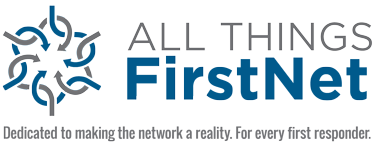By Chris F. Denney
In August 2025, I decided to look for a personal cell phone. So, I decided to give Verizon Wireless a try.
I have experience in wireless communications, so I know what I’m looking for. I’m looking for a personal line of service with public safety benefits that are provided in a subscriber-paid model instead of an agency-paid model.
Let’s provide a little back story, just to set the mood.
I am the “Manager of All Things Technology” for my employer, a Fire and EMS-focused public safety agency. We are currently FirstNet subscribers and believe in everything it stands for. This means being a network dedicated to public safety that offers all the benefits that a public safety communications network should have. One of these benefits is always-on Priority data and voice communication for first responders. On FirstNet, public safety users are always at the front of the line, even in non-emergency situations. Another key FirstNet benefit is Preemption, namely the automatic ability of first responder users to preempt — aka “kick off” — non-public safety users from the network to free up capacity whenever it is needed.)
FirstNet also has Band 14, the 20 MHz slice of the 700 MHz frequency band spectrum, that Congress has authorized exclusively for public safety. Although commercial AT&T users also have access to Band 14 when it’s not in use by first responders (under FirstNet’s contract with AT&T), FirstNet users get priority and preemption over all others as the need arises.
Also, FirstNet provides deployable communications assets that are available to us as subscribers. These portable communication sites are stood up as needed to support the FirstNet network during disasters, plus events when the network is fully operational but need additional assistance due to saturation loads — like elevated subscriber usage in a local area for organized events.
Now that we’ve set the mood with a little back story and you understand exactly how a public safety focused communications network should be with regards to design and functionality — that is, like FirstNet — here is what I experienced when I went shopping for a public safety-enabled personal phone at Verizon.
My shopping experience started with research. I looked at Verizon’s website to see what they had to offer in subscriber-paid solutions for public safety employees. Lo and behold, I eventually came across Verizon Frontline, which they called “The advanced network and technology for first responders”.
Promising, maybe? I continued my research and found out about the Verizon Frontline Network Slice. “We’ve dedicated part of our 5G Ultra-Wideband network for public safety agencies, so you have reliable high-priority access to fast communications, and secure connection and consistent performance when you need it most,” said the Verizon website.
That looks promising. So, it’s time for me to head to the Verizon store!
I got to the Verizon store and sat down with a sales rep to discuss a personal line of service. I provided documentation to prove that I’m employed by a public safety agency and explained my desire to purchase a personal line of service with public safety benefits.
The representative said, “sure!” and away we went. They spoke about the discounts offered to public safety employees, both on equipment and lines of service. I then asked about the public safety plans. The response was, “we’ll get you signed up and then we can get you qualified for the public safety plan.”
“Great!” was my response and we continued forward.
We worked through all the details such as the monthly plan cost, looked at phones and identified what I wanted, and then finalized the decision. I inquired about the next steps now that we were at this point, to get the public safety plan established. I was presented with instructions with a page header titled, “First Responder Discounts & Benefits Program | Verizon.”
Here’s where the truth came out. The first paragraph is titled “Voice Priority” and the first sentence starts with “Wireless Priority Service (WPS)”.
Here’s what it says on the Verizon website: “During rare instances of network congestion, WPS users have a greater chance of call completion on an operational cellular network than those without the service.”
A “greater chance”? That’s not exactly Priority and preemption, like I get on FirstNet.
Okay, so you have to enroll to use WPS on Verizon. I get that. So, after you’re enrolled, here’s what they have to offer a first responder: “If call congestion occurs, dial *272 followed by the 10-digit number you’re trying to reach or use the Priority Telecommunications Services (PTS) Dialer app. The app can access your contact list and dial *272 for you to assist in streamlining the call process.”
My immediate question was, “that’s it? This is all you have?”
The response I received from the Verizon sales rep was, “Yes”.
I then responded with, “so, you DON’T have an actual first responder plan that provides communications benefits?” The Verizon sales rep’s answer was, “Correct. This document will walk you through what to do and how to get qualified.”
Call me a skeptic, call it what you will. I wasn’t impressed by the information from the representative in the Verizon corporate store. Nonetheless, I finished everything up, purchased the phone and took it with me along with three pieces of paper. Two pieces were simply receipts. The third was the instructions for signing up for WPS, of which I’m all too familiar with, given my role as “Manager of All Things Technology.”
The Verizon sales process took about fifteen to twenty minutes. Once it was done, I got home and thought, “I’m going to call Customer Support to verify whether the information about WPS is actually true and get my plan changed to the public safety plan.”
I phoned Verizon, verified my account, and then spoke to their Customer Support person about switching over to the public safety plan that they spoke of. The representative came back after a few minutes and proceeded to tell me all about WPS. Once again, I inquired as to whether or not they offered anything else other than the WPS feature. And again, the answer was no.
So, a lot was learned today.
Verizon does provide sort-of priority and preemption over their commercial network via WPS. As the Verizon website said, “During rare instances of network congestion, WPS users have a greater chance of call completion on an operational cellular network than those without the service.”
Of course, you can only access WPS for voice, and only if you enter the *272 followed by the 10 digit number you’re calling.
As for data and video? Forget it.
Worth noting: WPS has been in existence since before FirstNet began, and every cellphone carrier allows first responders to access it after enrollment. There’s nothing new about WPS, which was established in 2002. It’s just the continuation of an existing government program that carriers are marketing as their own.
The moral to this tale? My experience with Verizon’s first responder service and WPS led to some interesting discoveries. However, Verizon Frontline simply can’t compare to FirstNet, which offers true priority service to first responders at all times. Speaking as my employer’s Manager of All Things Technology, I’m very glad that FirstNet is what it is, which is a real dedicated network for police, fire, and EMS.
FirstNet provides what is needed by every branch of public safety, both primary and extended primary. Based on my experience, Verizon Frontline doesn’t.

Chris F. Denney
Chris Denney is a Division Chief / Director of all technology programs for a suburban fire department in the Kansas City metropolitan area. He has 36 years of experience in technology and 31 years in the fire service. He holds a Bachelor of Science degree (Network & Communications Management) and a Master of Business Administration (Telecommunications Management).





Be the first to comment on "A First Responder’s Experience: Verizon Frontline Fails to Impress"